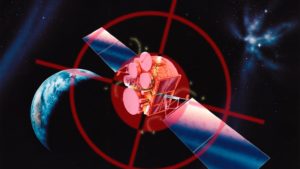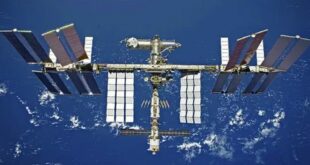
U.S. Director of National Intelligence (DNI), Dan Coats, along with the heads of the Federal Bureau of Investigation (FBI), Central Intelligence Agency (CIA), National Security Agency (NSA), Defense Intelligence Agency (DIA), and the National Geospatial Intelligence Agency (NGA), gave testimony to the U.S. Senate’s Select Committee on Intelligence about the Office of the DNI’s latest Worldwide Threat Assessment of the U.S. Intelligence Community on 29 January 2019.
The annual Worldwide Threat Assessment is a rare public document from the U.S. Intelligence Community that covers everything from terrorism and cyber threats through to nuclear weapons and ballistic missile proliferation, as well as threat assessments of particular countries such as Russia, China, North Korea, and Iran. It also includes a section about emerging global national security space trends as well as a brief assessment of how U.S. intelligence perceives threats to U.S. and allied satellites.
The 2019 Worldwide Threat Assessment is no different in this regard, and devotes just under two pages from its 42 page document on space issues.
“We assess that commercial space services will continue to expand; countries—including US adversaries and strategic competitors—will become more reliant on space services for civil and military needs, and China and Russia will field new counterspace weapons intended to target US and allied space capabilities,” began the section on space threats.
“We continue to assess that the expansion of the global space industry will further extend space-enabled capabilities and space situational awareness to government, nonstate, and commercial actors in the next several years…All actors will increasingly have access to space-derived information services, such as imagery; weather; communications; and positioning, navigation, and timing (PNT),” the Worldwide Threat Assessment says, in line with previous U.S. government statements that the strategic benefits of the space domain are being utilized by more and more countries.
“Global access to space services has expanded for civil, commercial, intelligence, and military purposes, in part because of technological innovation, private-sector investment, international partnerships, and demand from emerging markets…We expect foreign governments will continue efforts to expand their use of space-based reconnaissance, communications, and navigation systems—including by increasing the number of satellites, quality of capabilities, and applications for use,” the assessment adds.
It is on the satellite and counterspace developments of China and Russia that the Worldwide Threat Assessment focuses in on.
“China and Russia are seeking to expand the full spectrum of their space capabilities, as exemplified by China’s launch of its highest resolution imagery satellite, Gaofen-11, in July 2018,” the assessment says, inferring that Chinese and Russia satellite systems are becoming increasingly sophisticated and capable.
On Chinese and Russian counterspace and antisatellite (ASAT) weapons, the Worldwide Threat Assessment is explicit when it claims that both countries are developing these capabilities in order to offset conventional U.S. military superiority.
“We assess that China and Russia are training and equipping their military space forces and fielding new antisatellite (ASAT) weapons to hold US and allied space services at risk, even as they push for international agreements on the nonweaponization of space,” the assessment says.
“Both countries recognize the world’s growing reliance on space and view the capability to attack space services as a part of their broader efforts to deter an adversary from or defeat one in combat.”
The assessment claims that China has an operational direct-ascent ASAT missile:
“The People’s Liberation Army (PLA) has an operational ground-based ASAT missile intended to target low-Earth-orbit satellites, and China probably intends to pursue additional ASAT weapons capable of destroying satellites up to geosynchronous Earth orbit.”
Further, the assessment claims that Russia is likely to have its own direct-ascent ASAT missile operational within the next few years, and is also developing directed-energy ASAT weapons:
“Russia is developing a similar ground-launched ASAT missile system for targeting low-Earth orbit that is likely to be operational within the next several years. It has fielded a ground-based laser weapon, probably intended to blind or damage sensitive space-based optical sensors, such as those used for remote sensing.”
Lastly, the Worldwide Threat Assessment accuses both China and Russia of engaging in misleading space arms control advocacy while at the same time pursuing counterspace and ASAT capabilities that its own proposed arms control solution does not cover.
“China’s and Russia’s proposals for international agreements on the nonweaponization of space do not cover multiple issues connected to the ASAT weapons they are developing and deploying, which has allowed them to pursue space warfare capabilities while maintaining the position that space must remain weapons free,” the U.S. Intelligence Community maintains.





